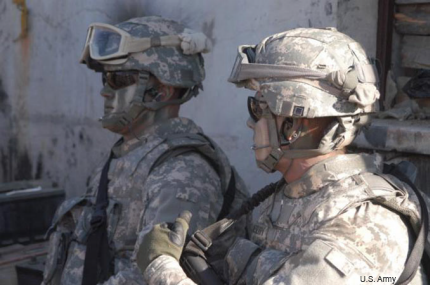ARL to print 3D skulls to study the effects of shockwaves
Researchers are looking to replicate the human skull to prevent damage caused by the rapid changes in air pressure caused by explosions.

Army Research Laboratory scientists are using 3D printing technologies to study the dangerous effects of shockwaves on the human brain, as part of an effort to find the best materials to prevent damage.
Explosives used in battle can kill not just from the fragmentation thrown out in the explosion but also from the rapid change in air pressure. High-order explosives, such as TNT or C4, produce supersonic overpressure shockwaves that can cause hidden brain injuries.
To better study the effects of these shockwaves on soldiers’ brains and to develop new techniques and materials to mitigate those effects, ARL researchers are creating synthetic cranial bones that will be used in experiments that would simulate combat blasts, according to an ARL release. The research would contribute to efforts in the military to develop new prototypes of helmets to better protect personnel.
Using 3D printing technology, the scientists are planning to replicate the structure of a human skull using synthetic materials. Researchers have used CT scans to analyze the geometry and structure of the skull, and will combine synthetic materials and 3D printing to produce models.
While commercial synthetic bones are available for surgeons to practice on, their design is unsuitable for blast tests. Meanwhile, real skulls obtained from donors have a tendency to come from older individuals that are not representative of the 20- and 30-year-old soldiers operating in combat environments.
"The mechanical properties of the human skull change with age and depend on the health of the individual,” Dr. Thomas Plaisted, a materials engineer working for ARL, said in the release. “Donor skulls that may be available for testing would typically come from older people, and the properties of those skulls can be highly variable and may not have the same response as the average skull of the Army soldier population."
The goal of the research is to find the best materials to protect the head from injury. For primary blast waves, even indirect blows to the head can cause concussions and mild traumatic brain injury.
"We are using computer modeling of head and helmet impacts to understand how tailoring the padding properties can reduce acceleration at various impact locations around the helmet. Then, those properties are engineered into materials and tested in the laboratory to validate what we are seeing in the computer models,” Plaisted said. “The research is giving insight on optimal material structures and material combinations that achieve increased energy absorption while still being comfortable to wear."
So far, ARL has been able to test the base material that would be used in the synthetic skulls and have determined that it is a close match to its organic counterpart. The research team will now look at the resolution limits that can be achieved with 3D printing, and whether the resolution is high enough to capture the properties of the skull, Plaisted said.
ARL expects to begin printing the synthetic skulls by fall of this year.
The Army in general has been focusing heavily on additive manufacturing. Scientists across the service have been conducting research on everything from printable clothing and wearable sensors to techniques that would allow the Army to 3D print food.
NEXT STORY: Army cyber training center to get new commander

